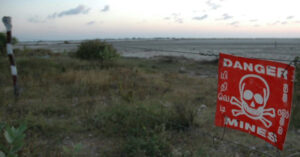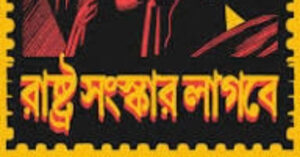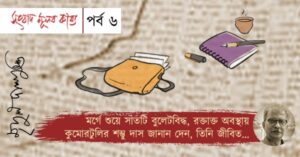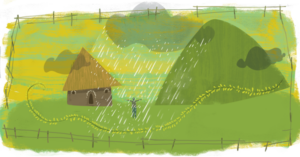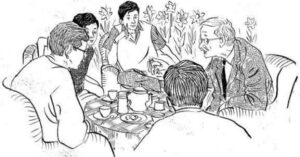December Vaccines
The first half of December is bright, cold and bracing; but the latter has a shower or two of rain, or sometimes sleet and snow. At all seasons you may walk out at any hour of the day with safety, though a chattah is pleasant. Some persons prefer this climate even to that of England. I do not, for the rains cut up the summer, and make it too cold, so that although the winter is not so cold as that of England, neither is the summer so warm; still it is a pleasant place to the feelings, while in salubrity it cannot be surpassed …’
This is from an ‘anonymous’ correspondent’s letter to The Englishman. It was a parallel response to Dr Campbell’s ‘confidential report’ about the progress of Darjeeling and the construction of Hill Cart Road to the ‘Government’. Dr Campbell had developed a reputation for being an efficient reporter of both the serious and the seemingly trivial to the administration based in Calcutta. This letter from the anonymous writer is quite long, and while moving through its cluster of reports, about the ‘Road’, ‘Accommodation’, ‘Provisions’, ‘Buildings’, one comes at the end to two of these entries that are amusing.
One has the sub-heading ‘Darjeeling A Wretched Place’; the other, from which I have quoted, is about Darjeeling’s ‘Climate’. These two, in particular, are meant to be an antithesis to Dr Campbell’s enthusiastic commendation of the place and the progress everyone seemed to be making to make it worth one’s attention and bureaucratic investment.
Every year, as the cold in winter’s marrow deepens, there is excitement, both among locals and also among possible tourists – if only there was a snowfall, their lives would change, even if only for a day. It is an affordable and natural version of Disneyland – nature as an entertaining snow-making machine.
As I read letters and reports from these winter months of 1839, from the time Darjeeling begins to develop a personality and reputation, I cannot help comparing it to its life today. The report in The Englishman appears in the middle of November, after winter has set in – not a drop of rain has fallen since the 28th of September, the correspondent reports. It’s an unnecessary detail, but one that helps the reader to understand the writer’s frustration with the long and impending winter.
Every year, as the cold in winter’s marrow deepens, there is excitement, both among locals and also among possible tourists – if only there was a snowfall, their lives would change, even if only for a day. It is an affordable and natural version of Disneyland – nature as an entertaining snow-making machine. The enthusiasm, both of the snow and its lovers, is contagious – one melts soon enough, the other stays on for days, hoping for an encore.
December this year, like the last, has been deprived of that energy. As another variant of the Coronavirus makes its way to different parts of the world, and the urgency about vaccinations picks up again, I notice an advert for one such vaccination drive in the Darjeeling hills. And I am reminded of this letter written by Dr Pearson on 1st December 1839 from Darjeeling. He is submitting his ‘first statistics on his vaccination campaign’ to the Government: ‘I have the honour to send a register of persons vaccinated last month by me at Darjeeling … I regret that the column headed ‘Result’ is so unsatisfactory, but such I fear will be the case until I am allowed a vaccinator to go down to the valleys to the homes of the inhabitants and there propagate the disease. I believe I have succeeded in most of the cases latterly vaccinated, but the people have so great an aversion to remain from their homes that unless in the case of those who are serving here, I rarely see them a second time, especially if they imagine the disease to have taken effect.’
Dr Campbell supports the application, asking for a vaccination programme to help the Lepchas so that they can ‘avail themselves of the blessings of vaccination’. The Medical Board responds satisfactorily, even though it is a grudging and uncertain response: ‘We have already directed the Superintending Surgeon of the Dinapore Circle to appoint and dispatch a suitable vaccinator instructed at the Patna Depot for the Station of Darjeeling, although we confess that at present we are not sanguine of success’.
A ‘native vaccinator’ arrived next year, a month after this letter was written, in January 1840.
Who would have known that a little less than two hundred years later similar vaccination surveys and the need to go to hamlets and villages would once again become urgent?
Illustration by Suvamoy Mitra


